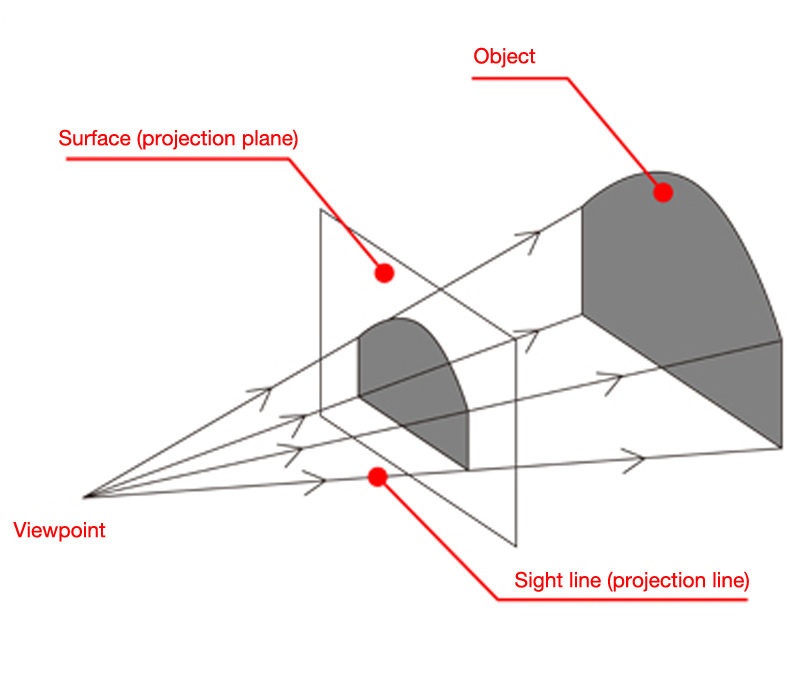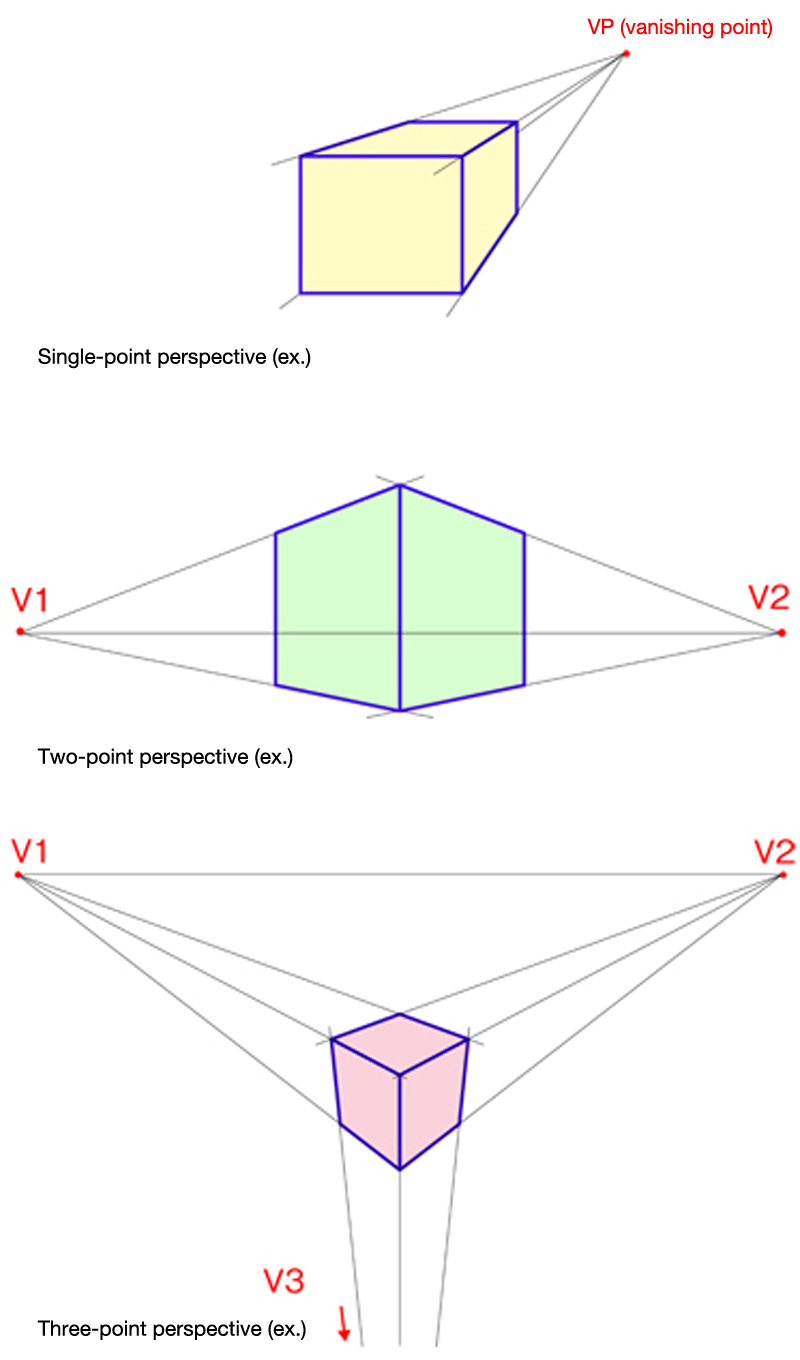Perspective Projection
透視投影
Toushitouei
CATEGORIES
Perspective projections are also called central projections and are one technique for showing a three-dimensional object on a flat surface. They are called perspective drawings or “pers” for short. Because they enable the creator to produce an identical expression to the real thing, they are used in many fields in the realm of design as a means to express design projections and finished product. They are extensively used in, for example, building exterior views and product design rendering, etc. as well as in aerial views of urban spaces, landscape diagrams of parks, etc. and room blueprints, etc.
A feature of perspective projection is that the line of sight from the point of sight to the object converges on a single point. The concept where there is no convergence and the view is parallel, is called parallel perspective. This is incorporated in third angle projection, which is often used in industrial blueprints.
Diagrams drawn with perspective projection, can be divided into single point, two-point and three-point perspectives depending on the point of sight and vanishing point*1, and each has several drawing methods used in portrayal. The use of these methods is arbitrary. Single point perspective, for example, might be used to focus on the front features of a room, etc. and, by using two-point perspective, it is easier to convey the dimensional feel of a building, etc. Three-point perspective can be used when the creator wants to portray a city or large subject with a sense of scale. These methods of expression can also be applied in painting as a means of conveying a sense of proximity or dimension. Even today, we can see the various attempts at using perspective projections by artists such as Leonardo Da Vinci and Albrecht Dürer since the Renaissance.
(*1) Vanishing point (or vanishing line) refers to a point when looking up at a tall building or looking at a road that stretches into the distance, the further the distance, the narrower the object becomes until, eventually, it gives the impression of converging at some point.
 Perspective projection
Perspective projection Parallel projection
Parallel projection The concepts behind perspective projection
The concepts behind perspective projection Projection systems
Projection systems
